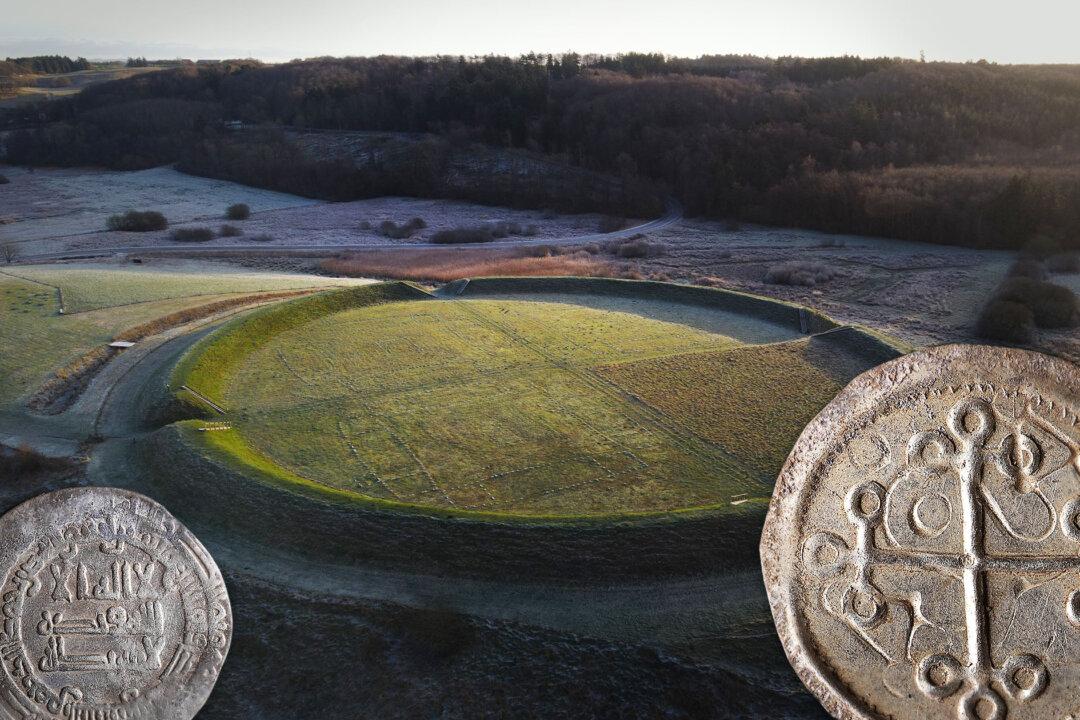The Viking king who introduced Christianity to Denmark had cross-bearing silver coins struck between the years 970 and 980. Last fall, researchers uncovered 50 silver coins bearing crucifixes, alongside other treasures, in a field in Blåtand, Denmark, just a few miles from where said king—Harald Bluetooth—built the iconic Viking ring castle Fyrkat, which survives today.
Up to 300 pieces were located by Nordjysk Detektorforening scientists near modern-day Hobro, of which, 50 were whole silver coins while the rest were deconstructed pieces of silver jewelry believed to have been used like bullion by the Vikings in those days, rather than adornment. The treasure was found to contain a mix of Danish, German, and Arab coinage.






